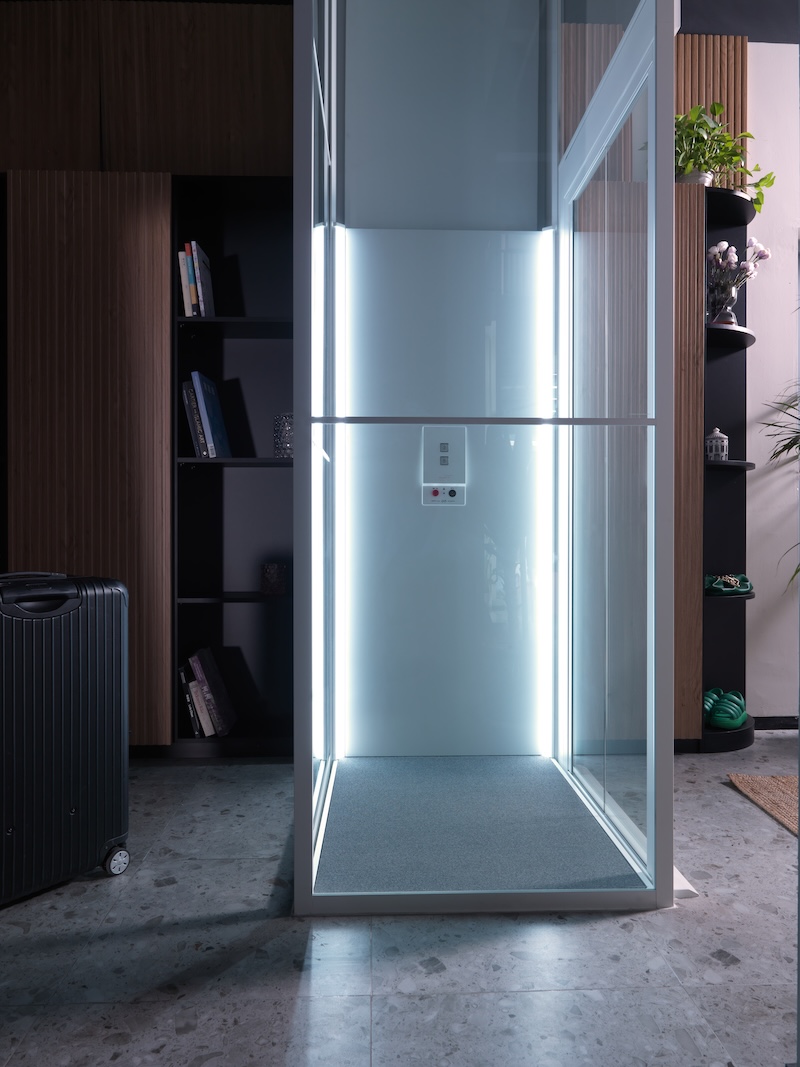
Installing a lift in your home can make your daily life easier. Nevertheless, it’s essential to understand the domestic lift regulations that apply in the UK.
At SWIFT Lifts, our expert knowledge of UK building regulations will guide you through every step.
Domestic Lift Regulations in the UK
Residential Lift regulations in the UK may seem complicated at first, but they’re there to keep you safe and ensure your lift works properly. They also help protect your investment by making sure the lift meets national standards.
Regulatory Bodies Governing Home Lifts
These organisations and regulations set the standards for domestic lifts in the UK.
1. BSI (British Standards Institution)
The BSI publishes the official standards for residential lifts. BS 5900, for example, outlines the requirements for home lifts, covering everything from safety features to installation methods.
2. Building Regulations (Approved Document M and K)
The Building Regulations are legal requirements that cover construction and building works in England and Wales. For home lifts, two parts are particularly important:
- Part M deals with accessibility.
- Part K focuses on protection from falling, collision, and impact.
3. The Machinery Directive & Supply of Machinery (Safety) Regulations
These laws make sure that all machines, including home lifts, are designed and installed safely. They also require lifts to carry a CE marking to show compliance.
Building Regulations Lift Requirements in the UK
Approved Document M: Accessibility Requirements
Part M of the Building Regulations makes sure that buildings are accessible to everyone, including people with disabilities. For a domestic lift, this means:
- A lift should be large enough to accommodate a wheelchair if needed.
- Controls must be placed at a height that is easy to reach.
- Doors and lift access areas must be wide enough for safe and easy use.
You can futureproof your home by following Part M wherever possible.
Approved Document K: Protection from Falling, Collision & Impact
Part K focuses on safety features to reduce the risk of falls or collisions, especially for children and elderly users. Following Part K may involve adding features like:
- Sturdy handrails inside the lift
- Safety sensors on doors
- Clear visual and audible signals

Safety Standards and Certifications for Home Lifts
The BS 5900 British Standard for Residential Lifts outlines specific requirements for home lifts, including:
- Minimum and maximum cabin sizes
- Safety measures such as emergency lowering
- Speed limitations suited to domestic environments
The Machinery Directive and CE Marking
All new lifts must meet the Machinery Directive and display a CE mark. This shows that the lift complies with essential health and safety requirements across the UK and Europe.
Without the CE mark, you may face insurance problems or difficulties if you sell the property.
Fire Safety Considerations
Lifts must be designed so that they don’t compromise the building’s fire protection. This may include fire-resistant lift shafts, smoke detectors, or alternative evacuation routes in the event of a fire.
Planning Permission and Local Authority Requirements
If your lift installation involves significant changes to the outside of your property, such as a lift shaft extension, you may need a permit.
Confusion over this step can lead to project delays, so it’s best to check with your local council early on.
Apply for Building Control Approval
Even if you don’t need planning permission, you will almost always need building control approval. Building control officers ensure that lift installations meet safety and structural standards.
At SWIFT Lifts, we handle building control submissions on your behalf to make this process as hassle-free as possible.
Cost Implications of Compliance
Compliance with safety and building regulations can add to the overall cost.
Extra expenses may include:
- Strengthening floors or walls
- Adding fire protection features
- Upgrading electrics to meet safety standards
While these costs can seem daunting, they’re a smart investment that protects your home’s value and ensures full legal compliance.
Ongoing Maintenance and Inspections
After installation, lifts must be regularly serviced and maintained. Some regulations recommend inspections at least once or twice a year, especially if the lift is used frequently.
Regular maintenance keeps your lift running safely and protects you against potential insurance issues down the line.
Choose a Reputable Home Lift Provider
When choosing a lift installer, you should always check:
- Whether they are experienced with domestic lift regulations
- If their lifts meet BS 5900 and have CE certification
- What support do they offer for planning permission and building control
- Their maintenance and servicing packages
Why SWIFT Lifts is a Trusted Name in the UK
At SWIFT Lifts, we specialise in high-quality, regulation-compliant home lifts. Our expert team:
- Guides you through building control and compliance from start to finish
- Supplies lifts that meet or exceed all British standards
- Design solutions tailored to your home’s space and your needs
- Provides full maintenance and inspection services for complete peace of mind
SWIFT Lifts takes the stress out of navigating complex domestic lift regulations by offering clear, straightforward advice tailored to your home.
Conclusion
Understanding domestic lift regulations may feel overwhelming at first. Nevertheless, the right support can make sure your home lift meets all necessary standards while adding value and comfort to your home.
Ready to take the next step? Contact SWIFT Lifts today for expert guidance and a free consultation.
Get in Touch!










